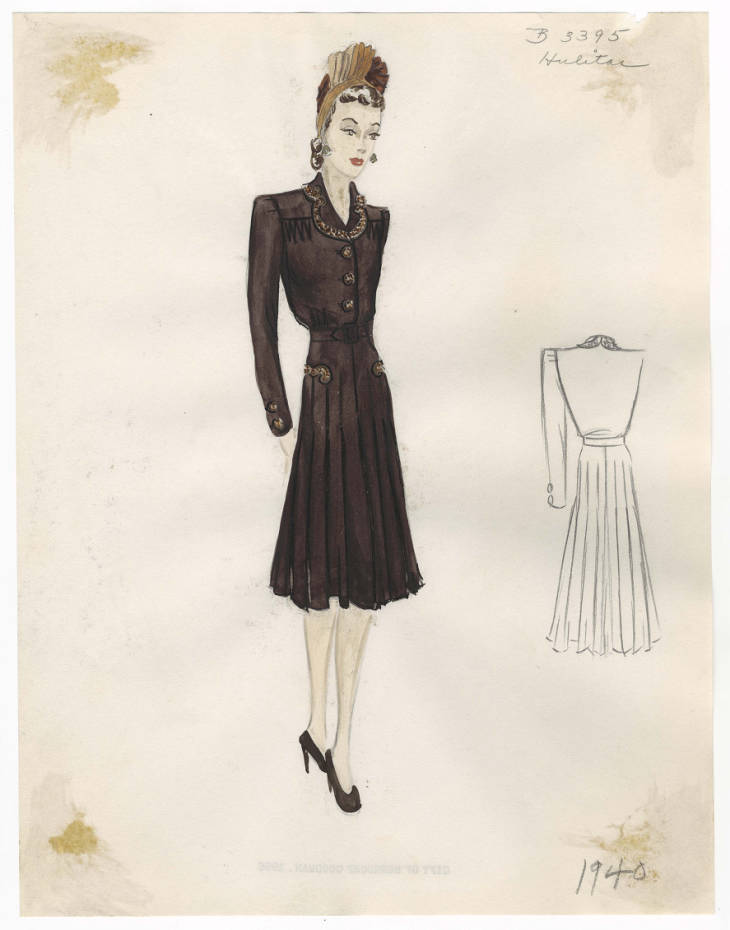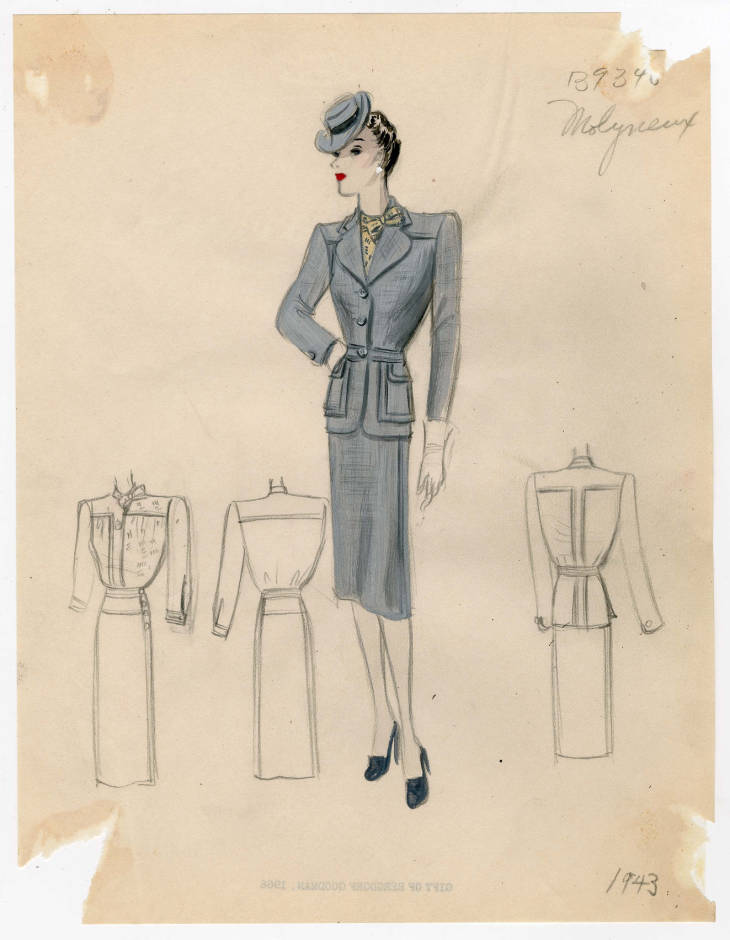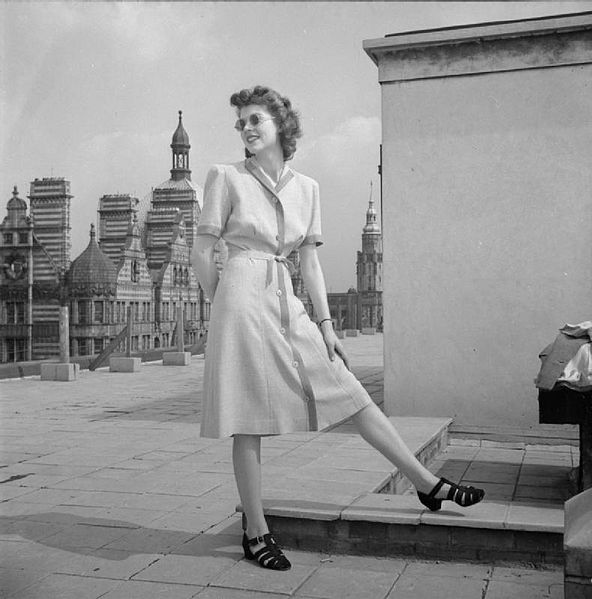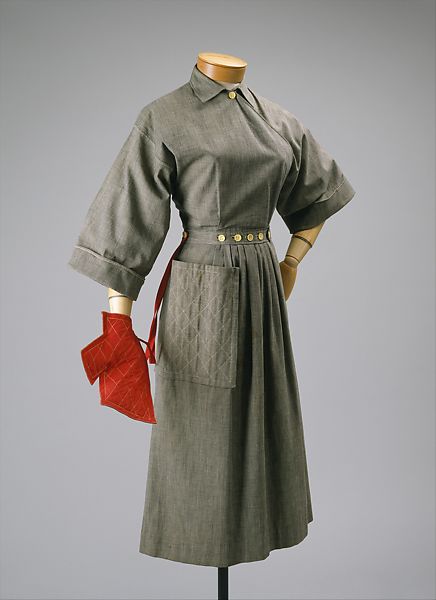Fashion in the 1940s: A Decade of Change and Resilience
The 1940s were a tumultuous time marked by World War II, which significantly influenced fashion trends across the globe. With wartime rationing and material shortages, clothing styles evolved under unique constraints. However, as the decade progressed, a shift towards femininity and casual American styles emerged, signaling a departure from the austere wartime aesthetics.
The Impact of War on Fashion
In the early 1940s, the war dominated European fashion, particularly in France, previously the epicenter of women’s design. The German occupation of Paris from 1940 until 1944 severely restricted access to new designs from renowned couturiers. As a result, many designers fled, while others remained to innovate within the limited landscape of war-time fashion. Notably, American designer Philip Hulitar contributed to the unique vision of the era with his sleek silhouettes illustrated in the sketches below:

Image: Source Fashion History Timeline

Image: Source Fashion History Timeline
Outside of France, both men’s and women’s fashion was dictated by rationing, leading to the emergence of Utility clothing in Britain. Crafted under strict government regulations, these garments offered simplicity and style despite the shortages. Utility dresses featured nipped-in waists and designs that could be easily mass-produced, striking a balance between functionality and fashion.

Image: Source Fashion History Timeline
American Designers Shine
Interestingly, American fashion experienced a surge, largely due to the absence of French designs. Designers like Norman Norell and Claire McCardell thrived in this environment. Norell introduced high-quality designs, often embellished with sequins, while McCardell became known for her practical yet chic designs that accommodated rationing restrictions. Her popular Popover dress of 1942, a simple wrap design, became emblematic of her approach, embodying both style and utility.

Image: Source Fashion History Timeline
The Transition to Post-War Fashion
With the end of the war in 1945, fashion began its transformation. The launch of Christian Dior’s